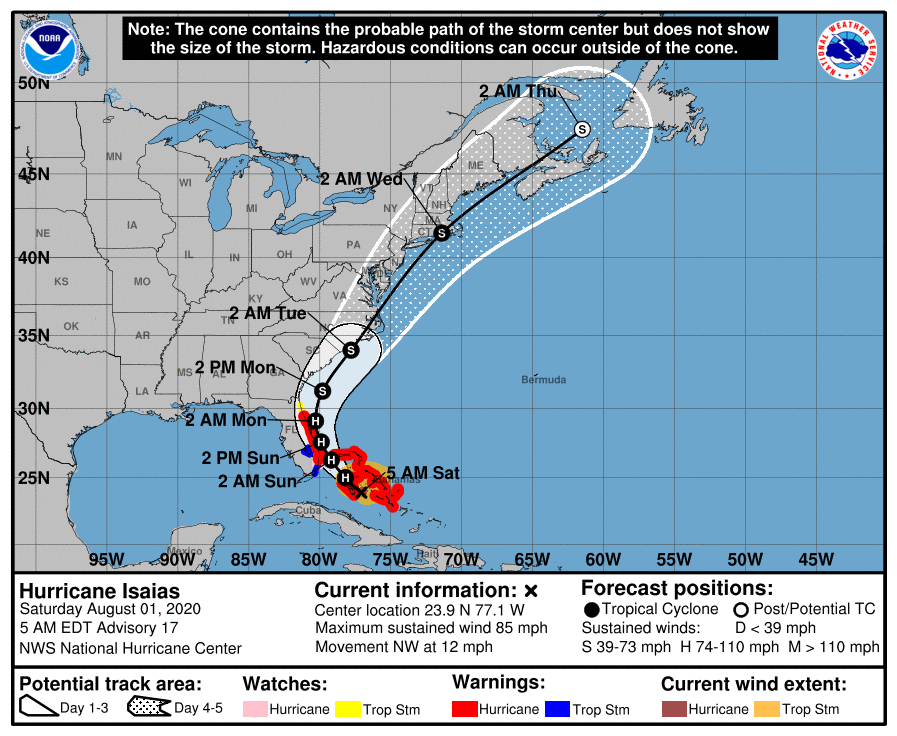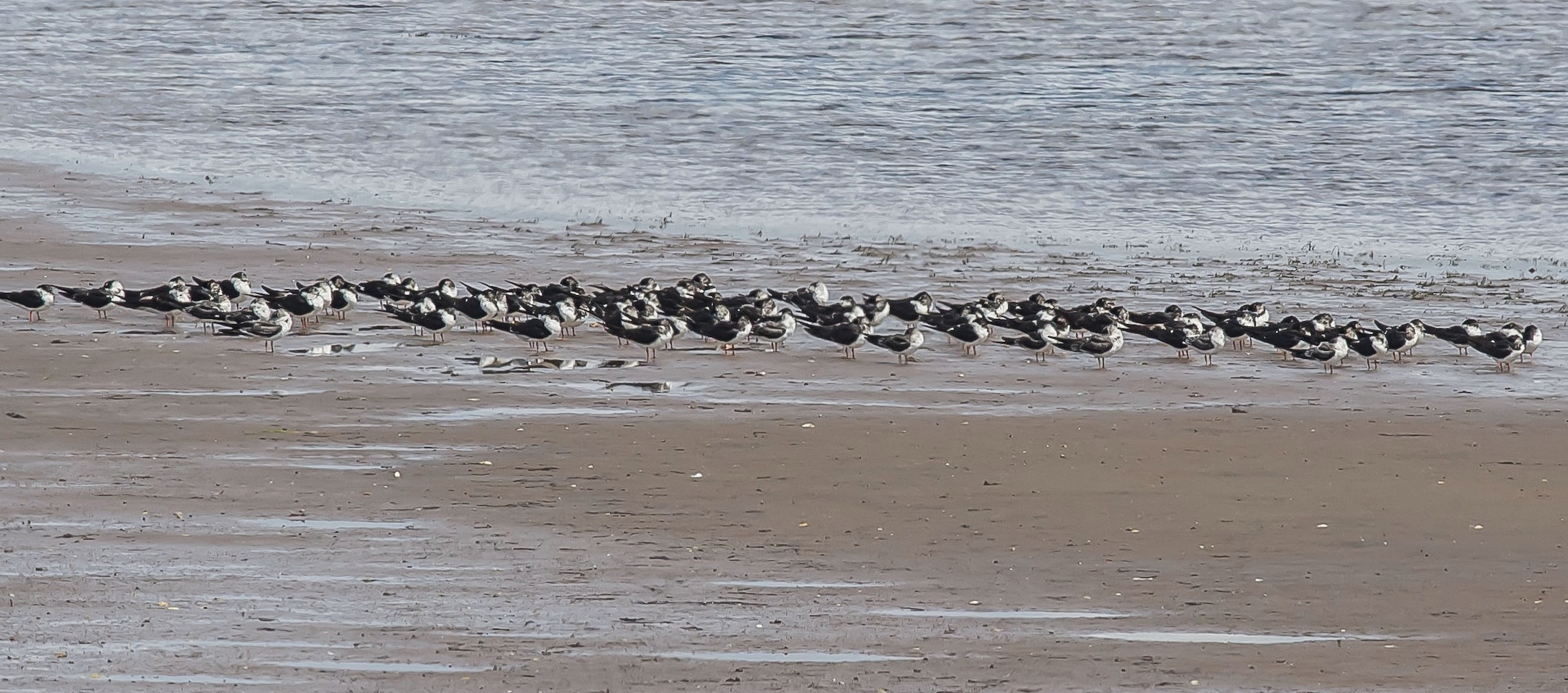Impact and possibilities of pelagic bird showing up anywhere,even inland lakes.
Stay safe
"I took a walk in the woods and came out taller than the trees."
- Henry David Thoreau
-----Original Message-----
From: Blogtrottr <busybee@blogtrottr.com>
To: prosbird <prosbird@aol.com>
Sent: Sat, Aug 1, 2020 06:51 AM
Subject: BirdCast: Isaias approaches
| BirdCast | | Forecasting bird migration across North America |
|
| |
| Isaias approaches Aug 1st 2020, 10:14, by af27 Hurricane Isaias is forecast to make landfall in the US on the Carolina coast after grazing the Florida Peninsula and passing directly over the Bahamas and nearby islands. This storm will likely produce hazardous conditions where it passes, including damaging winds, dangerous storm surges, and torrential rains with flooding. Safety in the path and wake of this storm is of the utmost importance, particular in this time of public health emergencies throughout the region. 
For those able to move safely in a physically distanced and protected manner, particularly in coastal areas of North Carolina, eastern Virginia and DelMarVa, portions of coastal New Jersey and eastern Long Island, and coastal southern New England, the passage of this system could presumably bring the typical array of tropical terns (e.g. our favorite aerialist Sooty Tern) and a number of Gulf Stream seabirds including Black-capped Petrel (and perhaps rare Pterodroma petrels, although the storm may be too coastal in nature and not sufficiently far enough offshore to entrain many of any members of this genus) and Band-rumped Storm-Petrel ashore and inland. Whether an array of near shore species (e.g. Royal and Sandwich Terns, Laughing Gull) will be displaced and entrained is an open question! We will post updated species lists as the forecast track becomes clearer in the coming days. Hurricane Dorian, a very strong storm that followed a path that was similar albeit offshore, brought a number of coastal and near shore species far afield into Canada, such as Gull-billed Tern, Black Skimmer, and Royal Tern. That storm was a full month later, with a number of species presumably dispersing and migrating at that point; will we see a similar pattern for these species with Isaias?  Black Skimmers appeared in large numbers in Nova Scotia after the passage of Hurricane Dorian. Mark Dennis/Macaulay Library. eBird S59679203 Hurricane Irene was followed a similar path to that predicted for Isaias after making landfall, but this storm spent time significantly farther offshore of the Florida Peninsula and Carolinas before making landfall – an example of some of its windfall is here. (Note, Black Swift is included in this array of entrained species, and observers should watch carefully for this and other large swift species.) A more complete account of that storm is here. |
 |
|
|